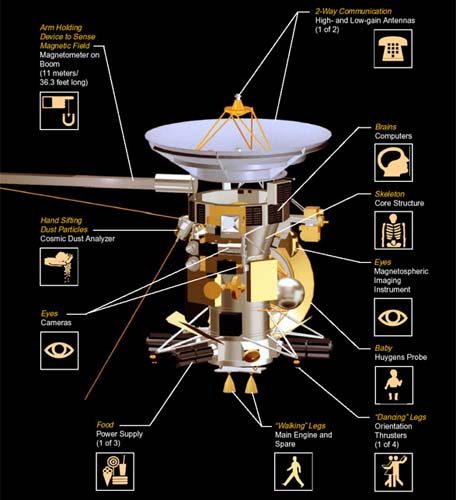Ocean may exist beneath Titan's crust
 Washington, March 21: NASA's Cassini spacecraft has discovered evidence that points to the existence of an underground ocean of water and ammonia on Saturn's moon Titan.
Washington, March 21: NASA's Cassini spacecraft has discovered evidence that points to the existence of an underground ocean of water and ammonia on Saturn's moon Titan.
The findings were made using radar measurements of Titan's rotation.
Scientists used Cassini's Synthetic Aperture Radar to collect imaging data during 19 separate passes over Titan between October
2005 and May 2007.
The radar can see through Titan's dense, methane-rich atmospheric haze, detailing never-before-seen surface features and establishing their locations on the moon's surface.
Using data from the radar's early observations, the scientists and radar engineers established the locations of 50 unique landmarks on Titan's surface.
They then searched for these same lakes, canyons and mountains in the reams of data returned by Cassini in its later flybys of Titan. They found prominent surface features had shifted from their expected positions by up to 19 miles.
A systematic displacement of surface features would be difficult to explain unless the moon's icy crust was decoupled from its core by an internal ocean, making it easier for the crust to move.
"We believe that about 62 miles beneath the ice and organic-rich surface is an internal ocean of liquid water mixed with ammonia," said Bryan Stiles of NASA's Jet Propulsion Laboratory (JPL) in, Pasadena, California.
According to Ralph Lorenz, Cassini radar scientist at the Johns Hopkins Applied Physics Laboratory in Laurel, Maryland, "The combination of an organic-rich environment and liquid water is very appealing to astrobiologists."
"Further study of Titan's rotation will let us understand the watery interior better, and because the spin of the crust and the winds in the atmosphere are linked, we might see seasonal variation in the spin in the next few years," he added. (ANI)